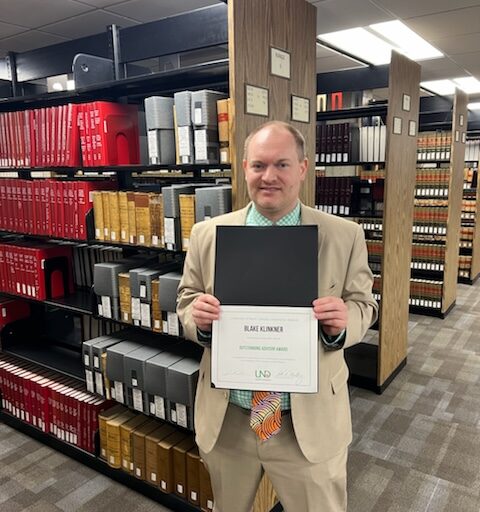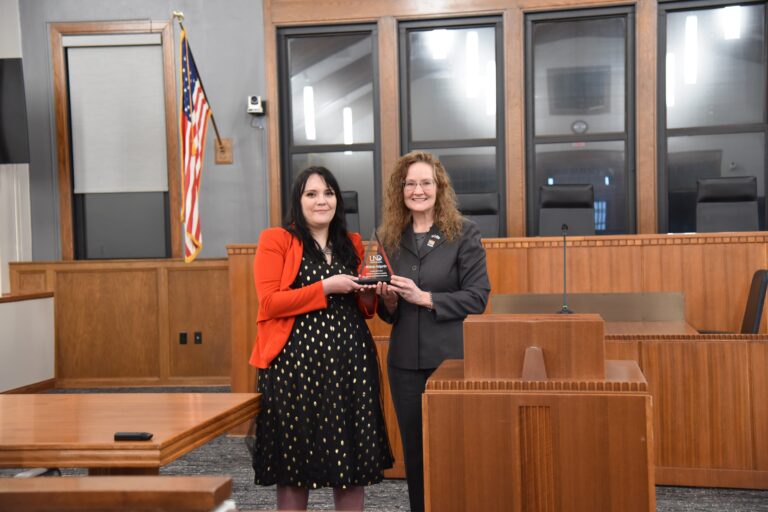Professor Alexandra Sickler quoted as an expert: Small Business Bankruptcy Rules Offer Creditors a Boost, Too (1)
Alexandra Sickler, Archie Unterseher Endowed Professor of Law, spent the past year as the academic reporter on a task force charged with evaluating bankruptcy relief for small businesses.
April 23, 2024, 4:00 AM CDT; Updated: April 23, 2024, 10:56 AM CDT
A popular bankruptcy law meant as a boon to small businesses is also helping their creditors.
Congress created the program, known as Subchapter V, about five years ago to make it easier and cheaper for small businesses to to shed debt through bankruptcy—then keep their businesses open. But critics of the law, including banking trade groups, have argued it risks “severely curtailing” creditors’ rights.
A task force at the American Bankruptcy Institute sought to study how businesses and creditors have fared under the program, which risks a drastic narrowing this summer if Congress fails to extend certain pandemic-era modifications.
“The task force’s study did not uncover any evidence indicating that creditors are doing worse under the subchapter than they would under any other scenario under bankruptcy law or state law,” Alexandra Sickler, a bankruptcy law professor at the University of North Dakota, said.
Bankruptcies filed under Subchapter V now make up about 44% of all Chapter 11 filings last year, according to data analyzed by University of Illinois Law professor Bob Lawless. And it has achieved its goals of making it easier for small businesses to use and emerge from bankruptcy, according to an April 19 report from the task force. Nearly 7,500 small businesses have filed for bankruptcy under Subchapter V as of Feb. 29, according to the report.
Congress raised the debt cutoff to $7.5 million for businesses to qualify for Subchapter V—but that debt cap will revert back to about $3 million this summer unless lawmakers extend it, meaning fewer businesses would be eligible. Sen. Dick Durbin (D-Ill.) introduced a bill (S. 4150) last week that would keep the higher limit for another two years.
“The data show that confirmation in Subchapter V cases occurs more often, more quickly, and at lower cost than in non-Subchapter V small business cases and standard Chapter 11 cases, and that creditors are receiving more money in Subchapter V,” the report said.
Bankers’ Concerns
The program makes several changes to traditional bankruptcy practices, like modifying the so-called absolute priority rule that requires certain creditors, like banks, to be paid in full before other, unsecured creditors.
The American Bankers Association and the Independent Community Bankers of America have warned that the additional flexibility given to debtors scales back creditors’ rights.
“As noted by our members, the elimination of the absolute priority rule and the right of creditors to vote on a plan of reorganization removed key oversight and accountability mechanisms,” the trade groups said in a letter last fall.
Allowing the cost cap to remain at $7.5 million would likely lead to higher borrowing costs for small businesses, the trade groups said, arguing that the program’s expansion was meant to be temporary in order to help small businesses during the pandemic. The higher debt limit was extended again in 2022.
Averting Liquidation
One broad way that Subchapter V benefits creditors is by getting more reorganization plans approved, thereby averting liquidation. That ends up helping creditors, too, as liquidated companies can’t pay their debts, said Megan Murray, a founder of firm Underwood Murray PA, and a co-chair of ABI’s task force.
For example, a business that survives for just a couple years thanks to the program means “those creditors are receiving two and a half years of payments as compared to zero,” Murray, who has experience representing debtors and creditors, said at an ABI press conference about its report last week.
According to the ABI study, half of Subchapter V cases result in confirmed plans, up from about a quarter prior to the program’s existence. The study focused on debtors with assets or liabilities under $10 million for the period before Subchapter V existed.
And just under 70% of Subchapter V plans won consent from all creditor groups, the study found.
Judge Michelle M. Harner of the US Bankruptcy Court for the District of Maryland, also a co-chair of the task force, said creditors are still getting used to the differences between traditional Chapter 11 cases and those filed under Subchapter V, which include a faster timeline.
“All parties—debtors and creditors—are still figuring out how the system works and might affect them,” Harner said.
(Updates the fifth paragraph with information about the number of cases filed. A prior version corrected the amount the debt limit would revert to in the sixth paragraph. )
To contact the reporter on this story: Evan Ochsner in Washington at eochsner@bloombergindustry.com


